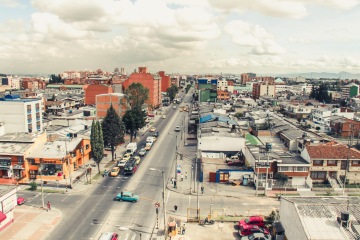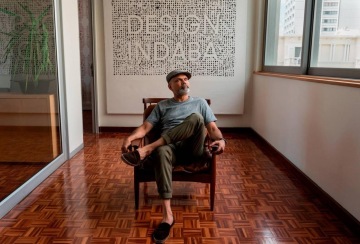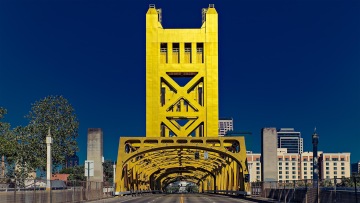
Enrique Peñalosa on the Democracy of Sidewalks and Bike Lanes
The former mayor of Bogota, discusses why equity begins with well-planned public spaces, making the case that their democratization is based on one simple urban feature: sidewalks. Photo courtesy of Michael Schmid
Enrique Peñalosa has been a cornerstone of Colombian urbanism since the 1990s, putting the country on the map for equitable urban planning aimed at creating a democratic city through public space. He served two terms: 1998-2001, and 2016-2019.
During his first term, Peñalosa was instrumental in the transformation of Bogotá from one of the world's most violent cities by focusing on the expansion of public services and institutions, including the now-famous TransMilenio bus system. A network he expanded during his second term nearly two decades later aimed to decongest roadways, by providing the network its own lane and incentivizing its use through efficiency.
Watch: Enrique Peñalosa on Why Equality Begins with Well-Planned Public Spaces
Peñalosa also played a significant role in expanding a number of public institutions and infrastructure projects, including numerous new public schools, public hospitals, and public libraries. The city’s public library system is part of a massive expansion of access to education for the city’s lower and middle-income residents, which its advocates hope will begin to chip away at the city’s income inequalities. The institution now sees more visitors than the New York Public Library and the National Library of Paris at its main branch alone.
Peñalosa has been a constant advocate in leveraging social institutions to create more equality and more democracy for Colomians, but perhaps his most impactful legacy has been his rejuvenation of sidewalks and bike lanes as an act of democracy. His avocation for viewing bike lanes and sidewalks as a human right has reimagined the Colombian captial into a prime example in what an equitable city should look like.
The 20th century will be remembered as a disastrous one in urban history. Peñalosa questions how can this century progress from that. By starting with pedestrianizing streets and designing quality sidewalks which he considers the most important element in a democratic city. While Peñalosa's talk is full challening ideas on how we think about public space, we've compiled a list of some of the most profound.
"It is clearer to us what the ideal environment is for a happy mountain gorilla, than what it is for a child."
Throughout his presentation, Peñalosa draws parallels between other living beings and their relationship to their habitats, adapting it to humans and their respective relationships to their own shared spaces, infrastructure, and the built environment. Peñalosa proposes that our current cities are completely wrong; we need to be able to walk, run, bike, be with people in public spaces, and have contact with nature, all without feeling inferior. During his first term as mayor, Peñalosa prioritized the expansion of public space by limiting congestion caused by cars—a mode of transportation he deems undemocratic and unideal for pedestrians.

“Bigger sidewalks emphasize the inclusive feeling that it’s okay to be here.”
Peñalosa uses a comparison of humans living in apartments and birds living in a cage: all can survive, but a bird would be happier in a cage the size of an auditorium, and even happier flying free. The same applies to humans and sidewalks as it provides of a feeling of being welcome and inclusive. He said “humans like bigger sidewalks—-this can’t be explained, but we feel it in our heart and in our soul.”
“Income inequality is not felt during work but its during leisure time”
Peñalosa makes it clear that the biggest threat to public space is the fragmentation and restrictiveness caused by privately owned property. He reminds us that a city is merely a means to a way of life, so we need to think about what kind of life will make our communities happier. Its about the collective. Showing respect for human dignity by treating citizens without a car with equal importance as citizens with one.

“A city that is built for all of its citizens—including elderly residents, children, people with a range of abilities, and those from lower income classes—is good for everybody.”
Peñalosa notes that finding trout in freshwater streams is indicative of a stream's health. The same can be applied to a city. Children being outdoors alone is often an indication of a safe, healthy city.

“A protected bicycle way is a symbol of democracy. It shows that a citizen on a $30 bicycle is equally as important as one on a $30,000 car.”
Bikes need good infrastructure. For every three people that use a car in Bogotá, one uses a bike. A sidewalk for pedestrians and a path for bicycles is a right. He draws on another connection of bicycles and children. If cities are built to be accessible to children—meaning safe for pedestrians and bicycles, and easily navigable—they become accessible to most city residents.
“Quality pedestrian public space is a magical good, whose capacity to render joy does not wear out”
Peñalosa’s makes the case for public spaces magical regeneration powers - that provides communities with a collective feeling of connectivity and dignity. But a green space isn’t always enough - it is also about the frame and the life that is happening around it. His reframing and challenging notion of what public space is, upholds its purpose to something higher. He says “public space is different from other public goods. It's not a means—but an end in itself”.

“Sidewalks are relatives of parks and plazas, not of streets”
More akin to parks and plazas than streets and highways, they will allow for public space to exist in another form and not just a means of transportation. They are for conversations, socializing, doing business, and children playing.They provide individual mobility and autonomy. In Bogota, Peñalosa fought hard to replace cars and make room for people. With the mentality that pedestrians come first, he flipped the dominant practice across the city, restoring comfort in public space.
“Parking is not a constitutional right in any country”
He continues with the arguement that developing cities for cars was never voted on by the population. The implication is that car owners do not have any more right to street space than those who do not have a car.
Related: Obstacles to Building Equitable Cities with Enrique Peñalosa | reSITE Small Talk
“In every detail, a city should reflect that human beings are sacred and that they are equal”
One of Peñalosa’s most thoughtful statements reminds us that cities are really just a means for life, impying that in order to thrive as a soceity, we need to build ourselves the right environment. That, juxtaposed against the positive correlation between richer societies and worsening traffic plagues every city along with the economic impact highways have on its immediate environment, it begs the question—who are these cities designed for? If we are designating road space—one of the city’s most valuable resources—which plays a role in the destruction of the surrounding areas of quality of life while devaluing real estate, who are we building cities for?
Enrique Peñalosa spoke at reSITE 2015: Shared City
More ideas on designing democratic cities
Leona Lynen on Planning Incomplete Cities
Leona Lynen sets a path for a publicly-planned revitalization of Berlin’s Haus der Statistik in the wake of a unique opportunity for Berliners to partner with their government.
Giving Design a Higher Purpose with Ravi Naidoo
Ravi Naidoo, the driving force behind Design Indaba, arguably the most influential design event in the world. The event takes place annually in Cape Town is only the tip of the iceberg. Listen as he pushes the boundaries of the purpose design holds with the simple question—what is design for? Photo courtesy of Design Indaba
Emmanuel Pratt on Regenerating Urban Ecology
Emmanuel Pratt, MacArthur fellow and founder of Sweet Water Foundation, regenerates neighborhoods by fusing architecture & community development.
Regenerating Cities, Transforming Communities with Christopher Cabaldon
Throughout Christopher Cabaldon on-going, 20-year-long seat in office, West Sacramento underwent has undergone and incredible transformation from a former industrial town to an urbanized, livable community. Hear from the man behind the city’s outstanding urban regeneration.




